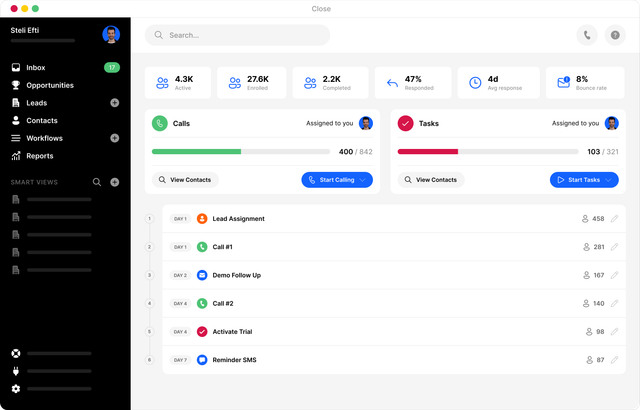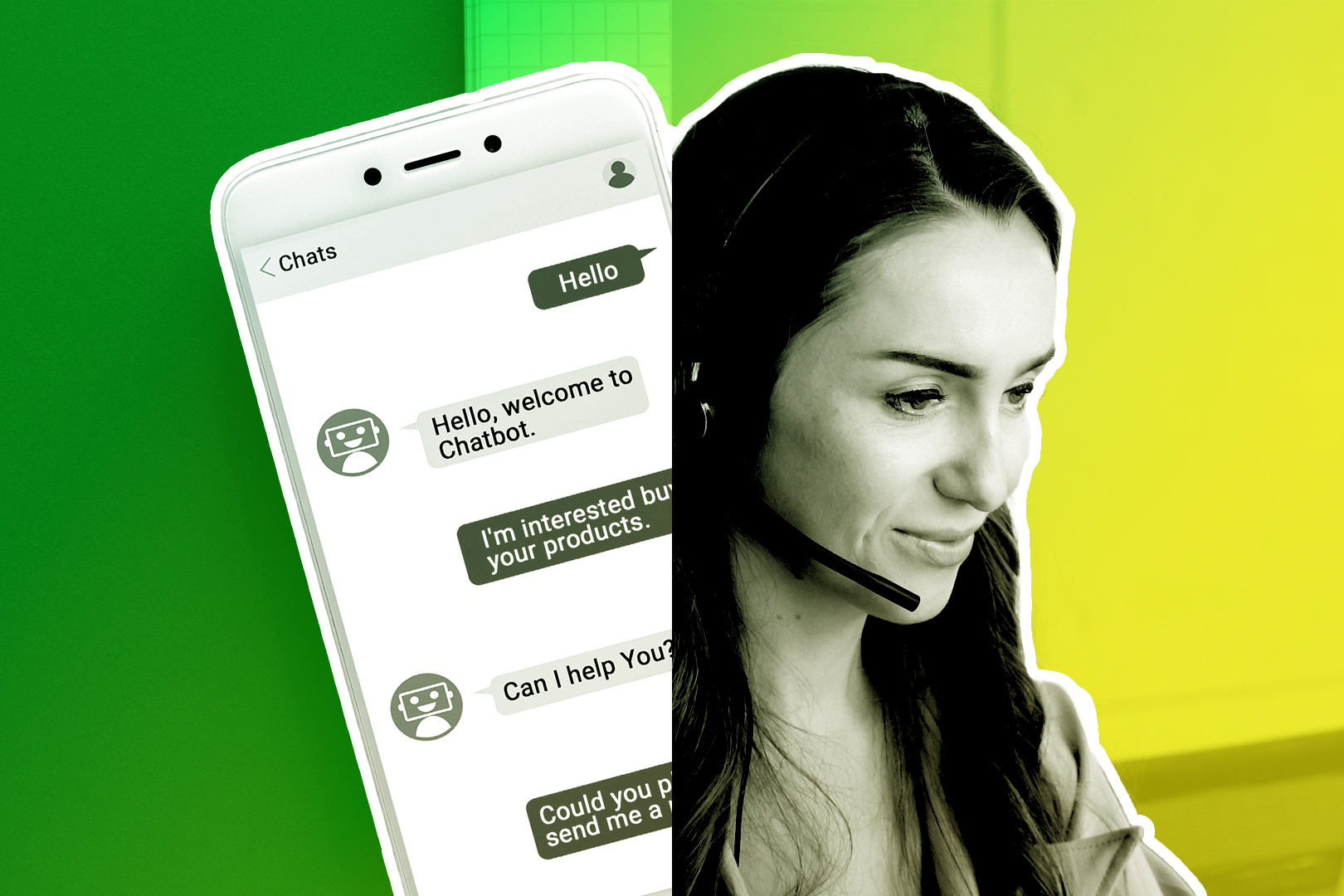You work hard to generate leads for your sales pipeline by sending out cold sales emails. But your cold email response rate sucks. Do you know what the best follow-up strategy is?
How many times should you follow up with a cold prospect? When should you follow up? What do the best cold emails include? When should you stop following up? (Should you stop following up?)
In this post, I'll share my consistent cold email follow-up strategy to help you and your reps fill your sales pipeline and ultimately close more deals.
What I’m sharing here aren’t rules but general cold email guidelines. It's your job to turn these general guidelines into best practices. That said, here’s what I think will work best for most salespeople.
Looking for inspiration? Our collection of b2b cold email templates highlights various approaches to engaging potential clients.
The Cold Email Follow-Up Formula for Salespeople
Following up is the key to cold sales email success. Here's the thing--most folks are busy. The average business person gets 121 emails a day. No matter how great your cold email's subject line is, there's a good chance your email gets lost.
Here's my process for following up:
- Day 1: Send out the first cold email. I mean, you can't follow up if you don't send that first email, right? Make sure you've researched your prospects and provided value. These cold email templates are a great starting point for writing effective cold emails.
- First Follow-Up Email: 1 day later, at a different time of the day:
- This email should be a modified version of your original email. It should communicate the same message, just in a different format. For example, if your initial email was several paragraphs long, make this follow-up sales email just two sentences long. If your initial cold email was just two sentences long, make this email several paragraphs long. Don’t write something completely different. Don’t add attachments.
- Second Follow-up Email: 2 days after your second email:
- Don’t even explain anything. Just succinctly restate your call to action. You can ask your prospect to introduce you to the right person in their organization, to schedule a call, or to respond to your email with their main pain point—whatever your desired call to action for your initial cold email was. For example, you could say, “Hey, when would be a good time for you to discuss this on a quick 10-minute call? How about Tuesday or Wednesday 10 a.m. Pacific?”
- Final Follow-Up 3: 4 to 5 days after your third email: It's time for the
- Break-up email. It’s an email in which you say goodbye to the prospect, betting on their loss aversion, a psychological principle describing people’s tendency to strongly prefer avoiding losses to acquiring gains.

Optionally, you can add another follow-up email before the break-up email, but I wouldn’t recommend following up on cold email outreach campaigns more than four times.
Looking to elevate your sales team's email engagement? Dive into the world of technical email setup and learn how it can impact your success.
Automate Cold Email Campaign Follow Up
Want to build a systematic email outreach program you can set up to repeat? Try Email Workflows in Close. These allow you to create a cadence that automates my shared follow-up formula.
With Workflows, you can create follow-up email templates, set a communication schedule, and put your cold email campaign on autopilot. When a lead replies, the workflow adapts accordingly—allowing you to continue the conversation and close the deal seamlessly!
Moreover, to further boost your cold email strategy, consider using our AI Email Writer tool. This tool leverages advanced AI to help you craft compelling and personalized cold emails quickly, saving you time and enhancing the impact of your outreach.
Set Up Individual Follow-up Reminders
If your sales team follows a more customized, low-volume approach, Close can help you there, too. Our CRM makes it super easy to leverage automation to send yourself reminders to send more personalized messages.
Click the day you want a follow-up reminder in your Inbox, and Close will take care of it. We've also built-in response detection, so you won't be inundated with superfluous reminders and will only be notified of prospects that need attention.

If you're not using Close yet, give it a try! Start your free trial now! (You don't even need a credit card and can get rolling with our sales platform in just a couple of minutes.)
Sometimes, Timing is the Key to Cold Sales Email
Most people falsely assume when they get a response to a follow-up sales emailit's because they've written better copy or finally found the perfect subject line.
Sometimes, a new subject line or CTA can move the needle, but in most cases, the real reason why people don't respond to your follow-up email is very simple: timing! (If you want to increase your chances of getting timely responses and boost your follow-up email success, consider using Close's Email Subject Line Generator.)
It likely just so happened that the recipient saw your previous email when they were too busy or distracted by something that prevented them from taking action. That’s why it didn’t register on their radar. Maybe they meant to get back to you but forgot.
Then, they got a follow-up email from you, which was sent at a better time, a time when the recipient had the attention, mental bandwidth, and time to process and respond to your sales email consciously.
If your prospects read your initial email and decide they’re not interested in your offer and don’t want to do business with you, then nothing you say in a follow-up email will turn that around and convert them.
So you shouldn’t even try to optimize for those people. Sometimes, no response is a response.
Instead, optimize only for people you have a realistic chance of converting from a cold prospect into a hot lead. These people are somewhat interested, but either didn’t have the time to respond or didn’t connect the dots—all they need is just a little bit more nudging.
The Bottom Line: Follow Ups Win Deals.
I say this all the time: The follow-up is where winning really happens. It’s when everyone else stops running, and you’re the only person still in the race. It doesn’t matter how slow you run—you will win because everybody else stopped running.
If you’ve had a positive interaction (be it an email, a phone call, on social media, or a meeting) with someone who showed interest in your solution but then stopped responding to your calls and emails, keep following up indefinitely. Forever. Until you get a result. Either a yes or a no.
For cold email sales campaigns, however, I recommend stopping at three or following up with more receptive prospects. Rather than talking to a brick wall, focus on lead generation efforts or following up with more receptive prospects.













